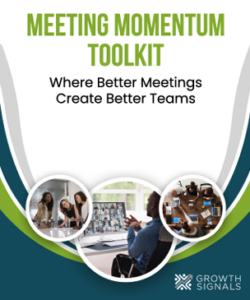In today’s ever-changing world, it’s more important than ever for workplaces to be resilient.
A resilient workplace is one that is able to adapt to change and bounce back from challenges.
It’s a place where employees feel supported and valued, and where they are able to thrive.
There are many benefits to having a resilient workplace culture.
For one, it can help to improve employee morale and productivity.
When employees feel supported and valued, they are more likely to be engaged in their work and to produce high-quality results.
Additionally, a resilient workplace culture can help to attract and retain top talent.
In today’s competitive job market, employees are looking for workplaces that offer more than just a paycheck.
They want to work in a place where they feel like they belong, where they can grow and develop, and where they can make a difference.
There are a number of things that workplaces can do to build a more resilient culture. Here are some tips:
Encourage Community and Connection
Community and connection are important aspects of building a resilient culture. Here are some ways to encourage community and connection in the workplace:
Host Regular Team-Building Activities
This could be anything from going out for lunch together to playing games at work. Team-building activities help employees get to know each other better and build relationships.
Create Opportunities for Employees to Socialize Outside of Work
This could be through employee resource groups, happy hours, or other social events. Socializing outside of work helps employees build relationships and feel more connected to each other.
Create a Culture of Open Communication
Encourage employees to share their ideas and feedback, both positive and negative. This will help employees feel like they are heard and valued.
Celebrate Employee Successes
When employees achieve their goals, take the time to recognize and celebrate their accomplishments. This will help employees feel appreciated and motivated.
Create a Positive and Supportive Work Environment
Be respectful of employees and their ideas. Be understanding when employees make mistakes. This will help employees feel comfortable taking risks and trying new things.
Give Space When Making Organizational Change
Having to make changes in an organization is inevitable, and while change can provide great benefits to an organization, it can sometimes be difficult for employees to adjust to. Here are a few tips on giving space for change:
Be Transparent About the Need for Change
Employees are more likely to be supportive of change if they understand why its necessary.
Communicate Clearly About the Changes That are Being Made
Explain the reasons for the changes, the benefits of the changes, and how the changes will affect employees.
Provide Support for Employees During the Change Process
This could include providing training, resources, or simply a listening ear.
Be Patient and Flexible
Change takes time. Don’t expect employees to adjust to change overnight. Be patient and flexible as they learn and grow.
Offer Comprehensive Mental Wellbeing Resources
Another important way to create a more resilient workplace culture is to offer mental wellbeing resources to employees. Here are some ways to do that effectively:
Provide Access to Mental Health Professionals
This could include on-site counseling, telehealth appointments, or referrals to outside providers.
Offer Employee Assistance Programs (EAPs)
EAPs typically provide confidential counseling, financial planning, and legal assistance.
Educate Employees About Mental Health
This could include providing training on mental health awareness, stress management, and coping skills.
Create a Culture of Openness and Understanding Around Mental Health
This means destigmatizing mental health issues and encouraging employees to seek help if they need it.
Provide Flexible Work Arrangements
This could include flextime, telecommuting, or compressed workweeks.
Encourage Employees to Take Breaks and to Get Enough Sleep
This can help to reduce stress and improve mental wellbeing.
Create a Positive and Supportive Work Environment
This means being respectful of employees and their ideas. It also means being understanding when employees make mistakes.
Establish Clear Channels for Communication and Feedback
Clear communication and feedback is crucial when creating a more resilient workplace culture. Here are some tips to follow when trying to do so:
Create a Culture of Open Communication
Encourage employees to share their ideas and feedback, both positive and negative. This will help employees feel like they are heard and valued.
Set up Regular Meetings With Employees
This could be one-on-one meetings with employees, or group meetings with teams or departments. Regular meetings provide an opportunity for employees to share their ideas and feedback, and for managers to get feedback from employees.
Create a Feedback Form
This could be a paper form or an online form. The feedback form should be easy to use and should allow employees to provide feedback on a variety of topics, such as their work environment, their supervisor, and the company’s policies and procedures.
Hold Town Hall Meetings
Town hall meetings are a great way to get feedback from a large group of employees. At a town hall meeting, employees can ask questions, share their ideas, and provide feedback to management.
Create an Anonymous Feedback System
This could be a web page or a suggestion box. An anonymous feedback system allows employees to share their feedback without fear of retaliation.
Be Responsive to Feedback
When employees provide feedback, be sure to listen to what they have to say and take their feedback into consideration. If you can’t implement a change right away, be sure to let employees know why and when they can expect to see a change.
Get Your Employees Trained in Resilience
More than five decades of research points to the fact that resilience is built by attitudes, behaviors and social supports that can be adopted and cultivated by anyone.
Consider engaging a skilled trainer to help your employees become more resilient and better able to handle challenges and setbacks.
For example, our resilience training program covers topics such as physical care for resilient, emotional resilience, mastering your mindset, and finding meaning.
Engaging your employees in resilience training can help them become more resilient, leading to higher productivity and a decrease likelihood of burnout.
Conclusion
There are a number of things that workplaces can do to build a more resilient culture.
By encouraging community and connection, giving space when making organizational change, offering comprehensive mental wellbeing resources, and establishing clear channels for communication and feedback, workplaces can create a culture that is better equipped to handle change and thrive.
A resilient workplace culture is one that is built on trust, respect, and collaboration.
It’s a place where employees feel supported and valued, and where they are able to perform at their very best.



